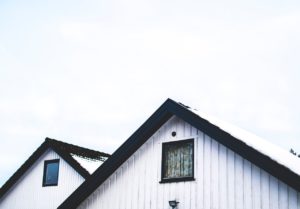
Having your roof inspected is the best way to learn about ongoing and potential problems. This allows you to address issues that are currently happening or even before they arise. Your roof is the only thing separating your home from the outside elements. It’s vital to have regular inspections at least twice a year. The National Roofing Contractors Association recommends scheduling a roof inspection during the fall and spring. A roof inspection is also recommended following any major storm. This is due in part to high winds, hail, or flying debris. But, this also depends on the age of your roof and the preventative measures you take to protect your roof. There’s a lot of factors that go into a roof inspection!
It’s typical to see some homeowners opt for only one roof inspection a year. If you’ve never had a professional roof inspection, you might be curious to learn how often your roof should be inspected. Here are the answers to some of the most common questions about the process.
The Tell-Tale Signs
The two most obvious signs of roof damage are leaks and drafts. For example, noticing dark stains or streaks on your ceiling is a sign you have water leaking through your roof. These leaks can cause widespread damage and should be addressed immediately. On the other hand, noticing drafts in your house is not always attributed to roof damage. But drafts in your home could very well be a sign something is wrong. Even if there are no signs that you need to have your roof repaired or replaced, you might be missing something. A more thorough inspection may reveal damage that is not clear to the untrained eye. So, scheduling an annual roof inspection is always a smart idea. Better safe than sorry, right?
Exterior vs. Interior
Roof inspections can be broken down into two categories, exterior and interior. An interior inspection includes checking the attic for proper ventilation, insulation, and moisture. These factors affect the structural integrity of your roof. They affect your energy bill as well. An exterior inspection includes checking the roof for leaks and proper flashing.
Inspectors also look at the condition of your shingles and chimney. After your roof inspection, the inspector gives you a detailed summary of what’s wrong with the roof. This should include a plan to fix said issues. Some of the problems we look for include:
- Mold – Mold growth on and around your roof is a sign of excessive water damage. During the interior inspection, we pay special attention to water leaks and damage.
- Shingle deterioration – Missing or loose shingles can lead to bigger problems, even if it seems small. We also check for rotting or algae growth on the shingles as well.
- Clogged gutters – If your gutters contain an excessive amount of loose shingle granules, this is a sign that your shingles are wearing away. Granules give your shingles added weight and protect them from ultraviolet rays. Without them, damage only spreads.
- Damaged flashing – Flashing that has pulled apart allows water to seep underneath your roof. It can also lead to corrosion on the underside of the panels.
Professional Roof Inspections In Denham Springs and the Surrounding Area
No matter the size of your roof, Livingston Roofing can help with your roof inspection in Denham Springs and the surrounding area. We’re here with you at every step of the roof inspection process. That includes contacting your insurance if repairs are necessary after your roof inspection. Are you ready to begin your roofing experience? Call us at 225-644-5718 or contact us to start. We can’t wait to help you.
